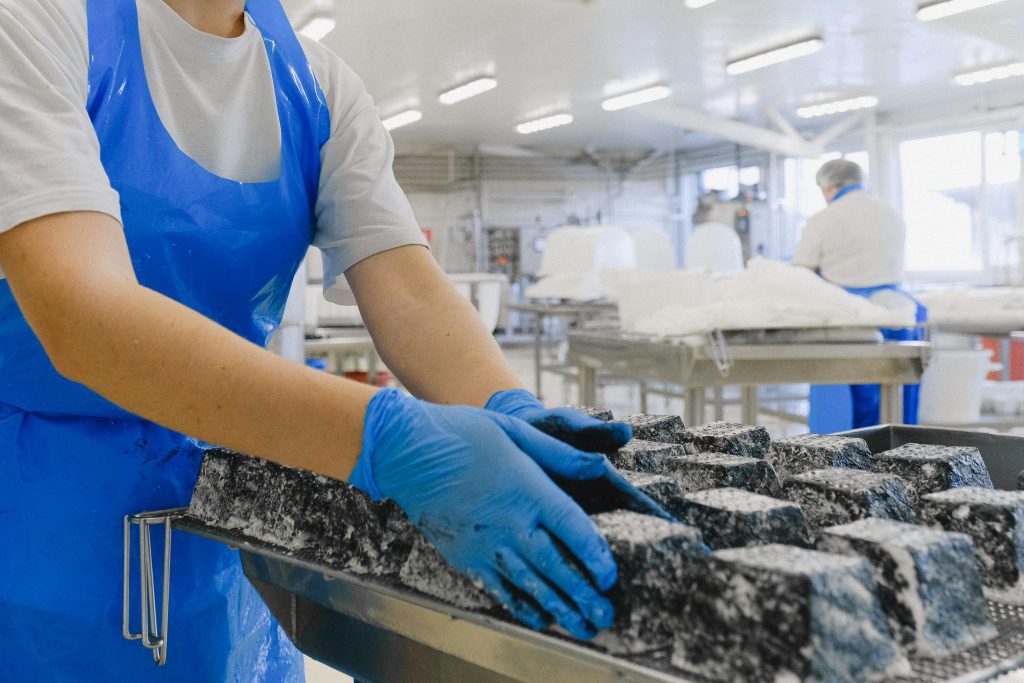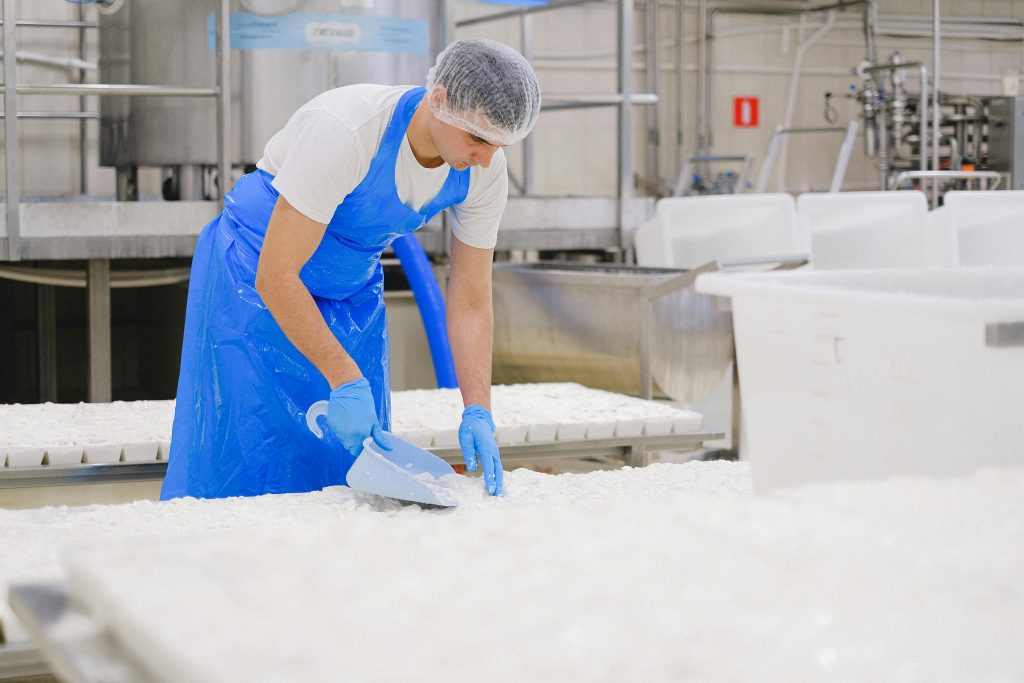- Automated temperature monitoring systems ensure precise control and swift response to deviations.
- HACCP plans proactively identify and mitigate risks, ensuring product safety.
- Robust sanitation protocols minimize contamination risks in food processing facilities.
- Traceability systems enable quick identification and recall of contaminated products.
- Water quality management solutions safeguard the purity of water used in production.
In the realm of the food industry, ensuring health and safety compliance is paramount. With stringent regulations and an ever-growing focus on consumer well-being, food businesses need robust solutions to navigate this complex landscape. From production to distribution, every step of the food supply chain demands meticulous attention to health and safety standards. This article will explore five innovative solutions that help food industry professionals uphold compliance and prioritize consumers’ health.

1. Automated Temperature Monitoring Systems
Temperature control is a critical aspect of food safety, particularly when preventing bacterial growth and foodborne illnesses. Traditional methods of monitoring temperatures manually can be time-consuming and prone to errors. Automated temperature monitoring systems offer a solution by continuously tracking temperatures in real time and alerting staff to any deviations from safe ranges.
Remote Monitoring:
These systems allow food industry professionals to monitor temperatures remotely, providing real-time data through web-based platforms or mobile applications. This feature enables swift action in case of temperature fluctuations, minimizing the risk of spoilage or contamination.
Data Logging:
Automated systems store temperature data electronically, facilitating accurate record-keeping for regulatory compliance purposes. This streamlined approach not only enhances efficiency but also simplifies the auditing process.
Integration with Other Systems:
Many automated temperature monitoring systems, such as inventory management or quality control systems, can integrate with existing infrastructure. This seamless integration ensures a holistic approach to food safety and compliance.
2. Hazard Analysis and Critical Control Points (HACCP) Plans
HACCP is a systematic approach to identifying and controlling potential hazards in food production. By implementing HACCP plans, food industry professionals can proactively mitigate risks and ensure the safety of their products.
Risk Assessment:
HACCP plans involve a thorough assessment of potential hazards at each stage of the food production process, from raw material sourcing to final packaging. Businesses can implement targeted control measures by identifying critical control points, such as cooking temperatures or sanitation procedures.
Documentation and Record-Keeping:
Effective HACCP implementation requires meticulous documentation of procedures, monitoring activities, and corrective actions. Food businesses maintain detailed records and demonstrate their commitment to compliance and accountability.
Continuous Improvement:
HACCP is not a one-time exercise but rather a continuous improvement process. Regular review and updates to HACCP plans ensure they effectively address evolving risks and regulatory requirements.
3. Sanitation and Hygiene Protocols
Maintaining high sanitation and hygiene standards is essential for preventing foodborne illnesses and ensuring consumer safety. Establishing robust cleaning and disinfection protocols can significantly reduce contamination risk in food processing facilities.
Cleaning Schedules:
Regular cleaning schedules ensure that all equipment, surfaces, and utensils are thoroughly sanitized. By adhering to predefined cleaning protocols, food industry professionals can minimize the risk of cross-contamination and microbial growth.
Employee Training:
Proper training on sanitation and hygiene practices is crucial for frontline staff. Providing comprehensive training programs equips employees with the knowledge and skills to maintain a clean and hygienic environment, reducing the likelihood of food safety incidents.
Validation and Verification:
Regular validation and verification of sanitation protocols are essential to ensure their effectiveness. Conducting microbial testing and swabbing procedures helps validate sanitation efforts and identify areas for improvement.
4. Traceability and Recall Management Systems
In the event of a food safety issue or product recall, traceability systems play a vital role in identifying the source of contamination and minimizing the impact on consumers. Implementing robust traceability and recall management systems enables food businesses to track products throughout the supply chain and respond swiftly to potential threats.

Batch Tracking:
Traceability systems enable batch-level tracking of ingredients and finished products, allowing for precise identification of affected items in the event of a recall. By maintaining accurate production and distribution records, food industry professionals can quickly locate and remove contaminated products from the market.
Communication Channels:
Effective communication channels are essential for disseminating recall information to relevant stakeholders, including retailers, distributors, and consumers. Utilizing various communication channels, such as email alerts, social media updates, and press releases, ensures that recall notices reach the intended audience promptly.
Mock Recall Exercises:
Conducting regular mock recall exercises helps food businesses test the effectiveness of their traceability and recall management systems. By simulating real-world scenarios, organizations can identify any gaps or weaknesses in their procedures and make necessary improvements.
5. Water Quality Management Solutions
Water quality is critical in food production, from ingredient preparation to equipment sanitation. Implementing water quality management solutions helps ensure that water used in food processing meets regulatory standards and poses no risk to consumer health.
Filtration Systems:
Water filtration systems remove impurities and contaminants from incoming water sources, such as sediment, chlorine, and heavy metals. By installing appropriate filtration systems, food industry professionals can safeguard the quality of water used in various production processes.
Water Softeners:
In areas where hard water is prevalent, water softeners can reduce the mineral content of water. By preventing scale buildup in equipment and pipelines, solutions like the reliable Marlo water softener help maintain optimal performance and prolong the lifespan of critical assets.
Monitoring and Testing:
Regular monitoring and testing of water quality parameters, such as pH levels and microbial contamination, are essential for ensuring compliance with regulatory standards. Implementing a comprehensive water testing program enables food businesses to detect any deviations from acceptable levels and take corrective action promptly.
Maintaining health and safety compliance in the food industry requires a multifaceted approach encompassing technological innovation, rigorous protocols, and proactive risk management strategies. By embracing solutions such as automated temperature monitoring systems, HACCP plans, sanitation protocols, traceability systems, and water quality management solutions, food businesses can uphold the highest safety standards and ensure consumer confidence in their products. As regulations continue to evolve and consumer expectations rise, investing in robust compliance solutions remains essential for success in the competitive food market.

